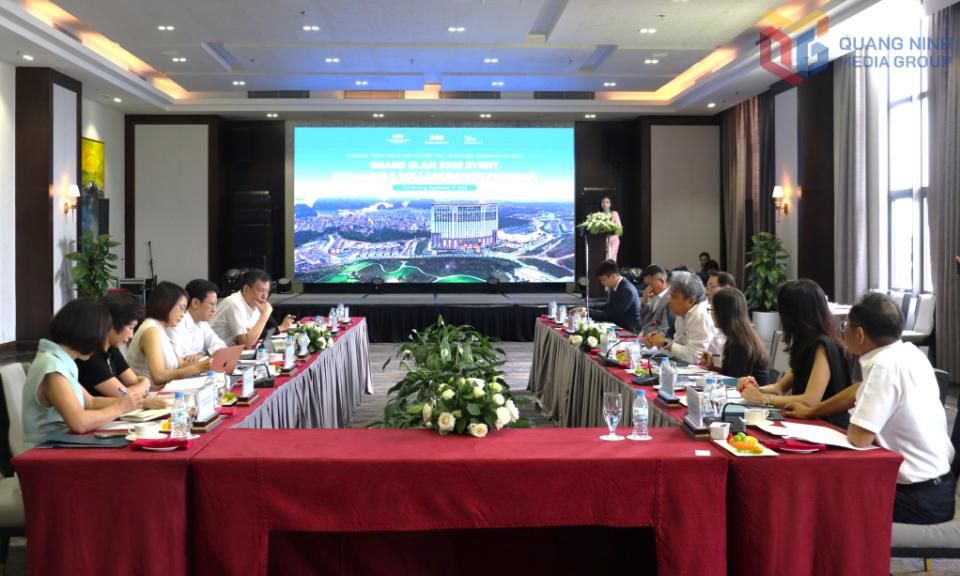Quang Ninh accelerates comprehensive digital transformation
The northern province of Quang Ninh is set to ramp up digital transformation in all fields this year, firstly in health care, education, industry, tourism, transport, and logistics.
Vice Chairman of the provincial People’s Committee Pham Van Thanh requested this process be sped up in 2022 while speaking at a recent teleconference looking into the plan on comprehensive digital transformation in Quang Ninh by 2025, with a vision to 2030.
Focuses should be identified for digital transformation, he stressed, asking departments, sectors, and localities to make strong moves in this regard.
Thanh pointed out the need to increase communications to change the mindset and actions of the entire political system, as well as local people and businesses. Besides, it is also necessary to include digital transformation targets and tasks in the resolutions, strategies, action plans, targets, and tasks on socio-economic development of all-level administrations and sectors.
In its overall plan on digital transformation, Quang Ninh is set to perform several tasks and solutions to achieve the targets on developing a digital administration, digital economy, and digital society as directed by the Government, ministries, central agencies, and the provincial Party Committee’s Standing Board.
In particular, it will work to have all the newly issued administrative procedures available at Level 4 - the highest level for online public services, all state agencies providing open data and equipped with sufficient and quality infrastructure for digital transformation, at least 50 percent of the businesses in local industrial parks applying digital technologies into their operations, 100 percent of the local residents benefiting from electronic identification, and each family having a digital address.
The province is also striving to raise the digital economy’s proportion in its gross regional domestic product (GRDP) to at least 20 percent.
It looks to complete eight important databases by the end of 2023, namely the ones on land; cadres, civil servants, and public employees; health care; education; planning; tourism; public investment; and transport.
Meanwhile, 100 percent of the dossiers, papers, and results of the administrative procedure settlement at the provincial, district, and communal levels will be digitalised from 2024. At least half of state agencies’ monitoring and examination activities will be carried out on the digital environment and their information systems by 2025.
Quang Ninh ranked fourth among the 63 provinces and cities nationwide in the 2020 Digital Transformation Index rankings, released last October, following Da Nang city and the provinces of Thua Thien-Hue and Bac Ninh.
According to Deputy Minister of Information and Telecommunications Nguyen Huy Dung, digital transformation saw a remarkable progress last year, with awareness of this issue among State agencies, businesses, and people significantly improving.
Digital transformation has become a trend in the wake of COVID-19, Dung said, adding it is a new engine driving the country’s socio-economic development and facilitating pandemic response and economic recovery.
Digital technology has found its way into every governmental, economic and social activity, he noted.
Chairman of the Vietnam Software Association Nguyen Van Khoa said the national digital transformation and the journey towards a digital economy and digital society still have a long way to go. Every people and every business is increasingly aware of how digital technology and is making profound changes in all areas, particularly in the delivery of public administrative and healthcare services.
The Prime Minister of Vietnam approved the national digital transformation programme by 2025, with a vision to 2030 in June 2020.
This programme targets that by 2025, the digital economy will make up 20 percent of Vietnam’s gross domestic product (GDP) and at least 10 percent of each sector. Vietnam also hopes to become one of the 50 best performers in the ICT Development Index and the Global Competitiveness Index, and among the 35 leading countries in the Global Innovation Index by that year.






